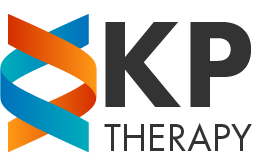Your core stabilizes your body, allowing you to move in any direction as well as having proper balance. It helps prevents falls and supports your body. So having a strong core is beneficial to everyone because it allows your body to function properly.
Improved Balance and Stability
Core exercises train the muscles in your pelvis, lower back, hips and abdomen to work together. This leads to better balance and stability making daily activities such as walking, running, and sitting much easier. A strong core will consist of muscles that work together to support your body. This will make you less susceptible to injuries, keeping your body aligned and minimizing strain on your muscles and joints.
Remedy / Improve Back Pain
A body that is aligned and upright will make you less prone to have back pain. A person’s core is at the centre of their body which supports your entire body especially the head, neck and back. If a core is not strengthened than other structures of your back will have to work harder to support the body. This leads to muscle strains and back pain.
Upright Posture
Good posture lessens wear and tear on the spine and allows you to breathe deeply making it easier for oxygen to travel through your muscles so they are able to contract. An upright posture can help you survive sitting or standing for long periods of time. It is important to have a strong core because it keeps your body aligned, eliminates back pain, and increases your overall exercise output.
Your Core In A Sports & Exercise Capacity
Core stability enables athletes to control their body position, generate optimum power, and transfer force along the kinetic chain. Core stability is often needed in rotational movements, which is required in almost every sport. … By strengthening core stabilizers, athletes can maximize strength in their arms and legs.
The importance of function of the central core of the body for stabilisation and force generation in all sports activities is being increasingly recognised. ‘Core stability’ is seen as being pivotal for efficient biomechanical function to maximise force generation and minimise joint loads in all types of activities ranging from running to throwing. ‘Core stability’ is defined as the ability to control the position and motion of the trunk over the pelvis to allow optimum production, transfer and control of force and motion to the terminal segment in integrated athletic activities. Rehabilitation should include the restoring of the core itself, but also include the core as the base for extremity function.
A strong core isn’t flashy, so it doesn’t get much recognition. But it is the stable base that provides the foundation for all those impressive moves that they want to master. A strong core is the forgotten foundation of functional fitness.
Studies show that better core strength gives all of the following benefits:
- Reduce soccer players chances of ankle injuries by 25%.
- Reduce the chance of all-sport ACL tears by 25%.
- Reduce the risk of all injuries in NCAA basketball players.
- Reduce the risk of hamstring tears by 20% or more in soccer players.
- Reduced risk of shoulder and elbow injuries in baseball pitchers by 66%.
Core strength generates power.
- Your core muscles are the strongest ones in your body. Think about it: We are talking about your abdominal muscles, back, and glutes. They are big, they are strong, and they can do some work.
- Remember the phrase “core to extremity”. A strong, stable core can generate far more power than your extremities could ever hope to. The most efficient way to do work is to generate power from your biggest muscles and efficiently transfer that momentum to your extremities.
The Major Muscles of “The Core :
· Transverse Abdominus
· Rectus Abdominus
· Internal Obliques
· External Obliques
· Quadratus Lumborum
· Erector Spinae
· Gluteus Medius
· Gluteus Maximus
· Diaphragm
· Pelvic Floor Muscles
· Multifidus
· Abs
· Muscles that attach to the pelvis (hamstrings, hip flexors, hip adductors)
Some core-strengthening moves for every fitness level
Bridge :
- Start on your back. Bend your knees and plant your feet on the floor at hip width. Place your hands at your sides, palms down.
- Tighten your core and glutes.
- Raise your hips until your knees are in line with your shoulders.
- Hold for 10–30 seconds.
- Repeat 3–5 times.
Supine Toe Tap :
- Start on your back. Lift your legs, with your knees bent to 90 degrees. Place your hands at your sides, palms down.
- Tighten your core. Lower your right foot and gently tap the floor, keeping your left leg still and your back flat.
- Raise your right leg to return to the starting position.
- Repeat with your left leg.
- Start with 1 set of 8–12 reps.
Bird Dog :
- Start on all fours, hands below your shoulders and knees below your hips.
- Tighten your core. Lift and straighten your right leg to hip level. Simultaneously lift and extend your left arm to shoulder level, palm down. Hold a neutral spine without allowing your back to arch as you extend your arm and leg.
- Pause.
- Repeat with your left leg and right arm.
- Start with 1 set of 8–12 rep
Plank :
- Start on all fours, with your hands below your shoulders and your knees below your hips.
- Straighten your legs behind you, keeping your feet hip-width apart. Tighten your core.
- Hold for 10–30 seconds.
- Repeat 3–5 times.
Mountain Climbers :
- Start in a plank with your hands below your shoulders. Tighten your core.
- Lift your right knee toward your chest, keeping your back straight and hips down.
- Return your right leg to the starting position as you simultaneously lift your left knee toward your chest.
- Continue alternating legs. Start with 1 set of 8–12 reps.



Recent Comments